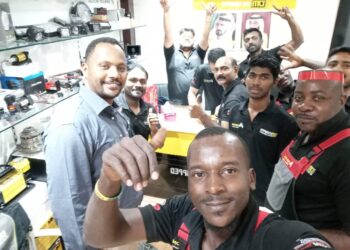[Kampala, Uganda, November 06, 2017]Mobile Broadband (MBB) is developing rapidly across the world, especially in urban areas. In this new era, wireless networks will require many small cells across a city to ensure a better user experience, improve network performance, and prepare for 5G-oriented evolution in the future.
This requires telecom operators to shift from pure macro cell towers, which are hundreds of feet tall and transmit wireless signals for miles, to embracing multi-layer networks that enable small cells from virtually any site such as street lamps, utility poles and traffic lights.
Market insights indicate that enormous resources are available around the globe for site deployment, including approximately 1 billion power and street light poles, 100 million monitoring and transmission poles, 10 million phone booths, and 10 million billboards. Most of these poles already have the core elements required to deploy a site, such as power and transmission resources, and right of way (ROW), making them ideal site locations
It is estimated that the number of outdoor pole sites will exceed the number of traditional tower sites by 2020, and outdoor pole sites will become the mainstream option for the intermediate network layer. In fact, according to ABI Research, over the next five years pole site usage is expected to grow by 26% per annum.
Challenges to acquiring and developing new sites
The benefits of pole sites are recognized by operators and many are gaining access to sites through third-parties that have already-approved sites. However, there are still significant obstacles in terms finding appropriate sites, obtaining permits and meeting regulations which have long approval cycles, and high rental fees.
For example, in South Africa the average site approval includes leasing negotiations, aviation approval, environmental approval, government approval, and many other links. The approval cycle takes up to 6 months and the average success rate is only 30%. Traditional site construction takes at least one month and civil engineering costs account for nearly 50% of the total site construction costs which can impact the operators’ investment in equipment and network supply capacity.
Reducing site costs and increasing efficiency to enable MBB growth
To help operators overcome these challenges and seize growth opportunities, Huawei’s approach is to help operator optimize total cost of operation, shorten ROI and enhance site efficiency. Huawei has developed innovative scenario-specific solutions namely PoleStar, TubeStar, and RuralStar that enable more sites in a simple, fast and cost-efficient manner.
Huawei PoleStar is for urban areas and can be installed on lamp posts and a variety of other locations in a matter of hours. Huawei TubeStar enables wireless devices to be embedded in light poles and are therefore environmentally friendly allowing operators to easily obtain permission for installation in sensitive areas. Huawei RuralStar is useful in rural areas because it decreases power consumption by 85% and cost by 70%.
Huawei provides operators with a total solution package (including site acquisition, equipment supply, and delivery) which helps them find new site resources and reduces on-air time with a 40% TCO saving. Huawei has already applied this model with several African operators.
In South Africa a site alliance has been formed from cooperation between stakeholders, such as the government, businesses and operators. With a wealth of experience in network planning, Huawei is fully aware of the locations where sites must be added and provided valuable insight into which specific sites could be leased to multiple operators.
By deploying pole sites, South Africa MTN which operates in many African countries, has saved $75K in construction costs for each single site, the site TTM is only 4-5 months, and the investment payback period for central urban areas is less than 1 year.
Given the large investment that operators are planning to make to improve connectivity over the coming years, they must build new sites to optimize network coverage and accommodate the sustained increase in MBB traffic. Pole sites are an ideal solution to these challenges and by partnering with Huawei, operators can reduce site CAPEX and OPEX to enable efficient MBB networks that improve citizens’ lives, create jobs and increase economic competitiveness.
For more information and customer stories of Huawei, please join us at AfricaCom 2017?“AfricaCom 2017“?????
Do you have a story in your community or an opinion to share with us: Email us at editorial@watchdoguganda.com











